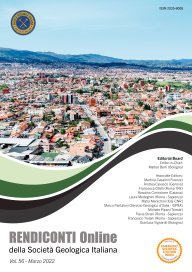
Channel planform changes on the lower Peiros River (Patras, Greece): 1945-2018 comparison
Andrea Mandarino1,2, Leonidas Stamatopoulos3, Giannis Mpalatsas3, Helene Simoni3,4, Kostas Papagiannopoulos4 & Pierluigi Brandolini1
1Department of Earth Environment and Life Sciences, University of Genova, Corso Europa 26, 16132 Genova, Italy.
2Geoscape - Geo-Environmental Consulting, Spin-Off of the University of Genova, Via Varese 2, 16122 Genova, Italy.
3 Department of Geology, University of Patras, 26504 Rio, Patras, Hellas.
4Institute of Local History, Kamenitsa, 25002, Vrachneika, Achaia, Hellas.
Corresponding author e-mail: andrea.mandarino@edu.unige.it
Volume: 56/2022
Pages: 21-28
Abstract
Changes between the active channel planform features of the lower Peiros River in 1945 and 2018 were examined through a multitemporal analysis performed in a GIS environment. The active channel experienced a consistent and rather generalized narrowing process (overall 71.6%, up to 84.3% at the reach-scale) along with localized increases of sinuosity and channel pattern variations associated with the disappearance of secondary channels and bars. Negligible changes in length occurred but the river mouth retreated by approximately 160 m. Large riverine areas disconnected from the active channel were involved in a peri-urbanization process and, thus, occupied by human activities and infrastructures; this resulted in anthropogenic landform modelling and increase in vulnerable elements exposed to hydrogeomorphic hazards. The observed active-channel planform changes could be, at least partly, human-induced. Further research is needed to define the Peiros River geomorphological evolution. The outcomes from this study represent an essential preliminary knowledge base under a river management perspective.
Keywords
Get Full Text